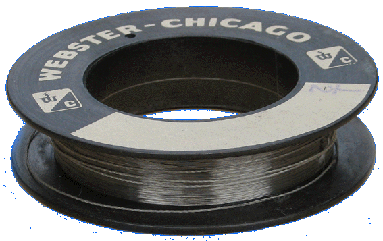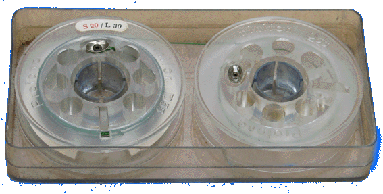


 |
 |
 |
||
|
|
|
|
||
|
|
||||
|
|
|
|
|
|
POPPY
Records can offer a
range of transcription services to CDR or other formats: Boosey & Hawkes
copying to CD:
Webster
Armour
Minifon
Protona


Magnetic wire recording was invented by Valdemar Poulsen in 1899, but it wasn't until the late 1940s that electronics had developed sufficiently to make it a popular recording format. It had a brief spell of popularity, then was eclipsed by tape recording in the mid 1950s; although it continued to be used in specialised recording fields such as aircraft flight data recorders and pocket dictating machines.
The wire is made of a special magnetisable grade of stainless steel and is thinner than a human hair. It is also very prone to tangling if stretched. Unwinding or winding recording wire by hand is not generally a good idea and wire machines incorporate special 'wire laying' mechanisms which are intended to wind the wire in a compact flat layer on the spool to prevent stray turns from starting a tangle. Failure, wear or misadjustment of the laying mechanism (or the use of unsuitable spools) is responsible for the majority of wire-tangling incidents.
Wires were made in various lengths,which may be marked on the spool or the box. Playing times range from 15 minutes to nearly 2 hours, so the format was a very useful and economic one for continuous recording of long items and 'actuality' events.
Poppy Records has equipment for playing the three main types of wire recordings:
Webster / Boosey & HawkesArmour Corporation
Miniphon / Protona
Other names may be found from time to time, but these usually turn out to be re-branded spools from one of the three main groups above. If in doubt, please ask